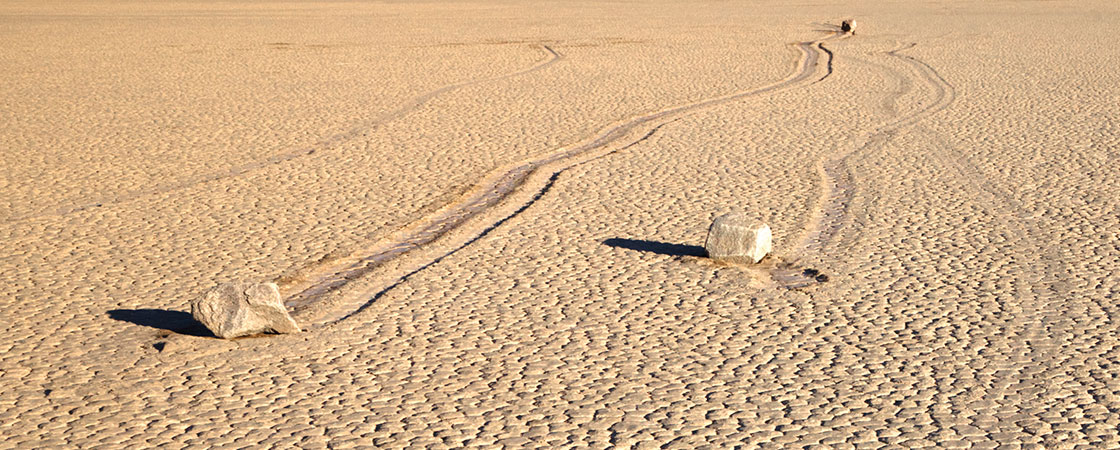People have been trying to solve the mystery of the “sailing stones” for years. One explanation was that whirlwinds moved the stones. Other explanations have included animals, magnets, pranksters, and, of course, aliens. (What mystery hasn’t been blamed on aliens?)
In 2006, a scientist named Ralph Lorenz came up with a new theory. He suggested that in the winter, slabs of ice form around the rocks. When the ground begins to thaw, the rocks, wearing collars of ice, float out of the mud and sail along, leaving trails in the dirt behind them.
Lorenz put his theory to the test in his own kitchen. He dropped a rock into a plastic dish, added water, and stuck the dish in his freezer. Later, he popped the rocksicle out and placed it in a shallow tray of water with sand at the bottom. Sure enough, with a gentle breath, Lorenz was able to send the rock moving across the water, carving a trail in the sand as it moved.
It seemed Lorenz had solved the mystery of the sailing stones at last. Alas, no aliens were involved.

